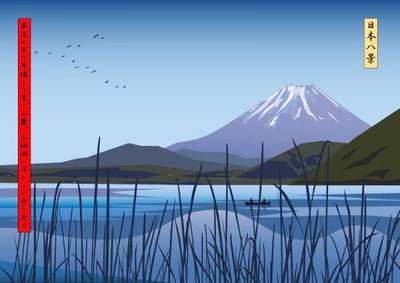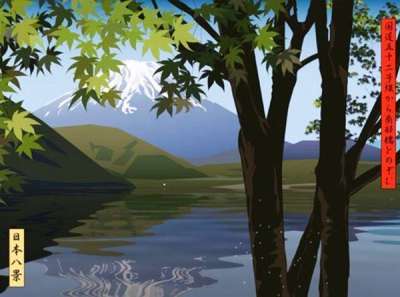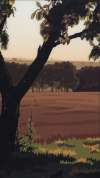Japanese
Landscapes
Closely referencing Japanese art history, Julian Opie uses two strips of calligraphy in each of his Japanese landscape prints, inspired by the woodblock prints of Hiroshige. The work of the Ukiyo-e school shows an apparent simplicity, attained by underlying complexity, with which Opie understandably feels a great affinity.
Julian Opie Japanese Landscapes for sale
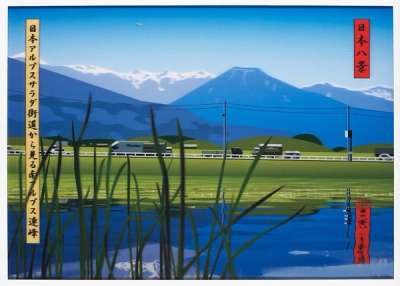
£2,250-£3,400Value Indicator
$4,350-$6,500 Value Indicator
$3,900-$6,000 Value Indicator
¥21,000-¥30,000 Value Indicator
€2,650-€4,000 Value Indicator
$22,000-$35,000 Value Indicator
¥430,000-¥650,000 Value Indicator
$2,850-$4,350 Value Indicator
TradingFloor
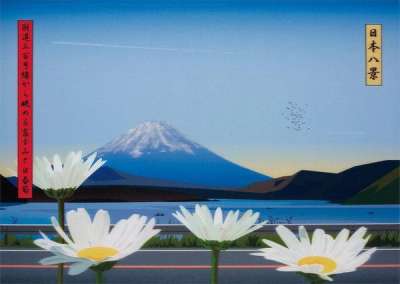
£5,000-£7,500Value Indicator
$9,500-$14,500 Value Indicator
$8,500-$13,000 Value Indicator
¥45,000-¥70,000 Value Indicator
€6,000-€9,000 Value Indicator
$50,000-$70,000 Value Indicator
¥960,000-¥1,430,000 Value Indicator
$6,500-$9,500 Value Indicator
TradingFloor
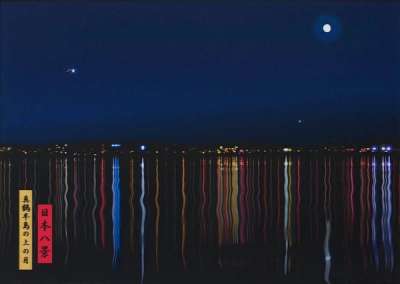
£1,600-£2,400Value Indicator
$3,100-$4,650 Value Indicator
$2,750-$4,100 Value Indicator
¥14,500-¥22,000 Value Indicator
€1,850-€2,800 Value Indicator
$16,000-$24,000 Value Indicator
¥310,000-¥460,000 Value Indicator
$2,000-$3,050 Value Indicator
TradingFloor
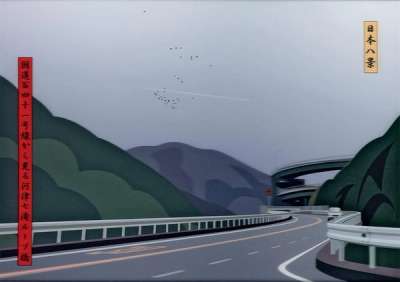
£2,200-£3,350Value Indicator
$4,250-$6,500 Value Indicator
$3,800-$6,000 Value Indicator
¥20,000-¥30,000 Value Indicator
€2,600-€3,900 Value Indicator
$22,000-$35,000 Value Indicator
¥420,000-¥630,000 Value Indicator
$2,800-$4,250 Value Indicator
Sell Your Art
with Us
with Us
Join Our Network of Collectors. Buy, Sell and Track Demand
Meaning & Analysis
Julian Opie’s Japanese Landscape series from 2009 shows a set of six prints inspired by a trip taken by the artist around Mount Fuji in Japan. Originally displayed as a series of animations based on double and triple LCD screens, this series is characteristic of Opie’s highly recognisable landscape style.
Closely referencing Japanese art history, Opie uses two strips of calligraphy in each landscape print to make clear his inspiration from the woodblock prints of Hiroshige. Interestingly, in prints such as View Of The Mountains From The Nihon Alps Salada Road, Opie incorporates these strips into the scene itself, showing the pond weed covering the strip on the left and the strip on the right is reflected in the water.
Much of Opie’s work has been compared to the digitally rendered landscapes of video games in the way that they mimic a simultaneously familiar yet otherworldly sphere. Indeed, this print is uncanny in the sense of familiarity it strikes within the viewer, in part due to Opie’s depersonalised, slick style rendered through computer technology. This video game aesthetic is typical of Opie’s landscape work from the late 1990s that encourages the viewer to step into a stylised representation of the world. Speaking of his work in relation to its ‘otherworldliness’, Opie has said, “I think my work is about trying to be happy… I want the world to seem like the kind of place you’d want to escape into… Mundane things are just as exciting as all the things you might imagine escaping into.”
The Japanese Landscapes series is devoid of any human presence, aside from the inclusion of some cars in the distance. Additionally, due to Opie’s slick visual style, the prints in the series are depersonalised to the point of commodification whereby the viewer is able to make their own imaginative journey through each image.
